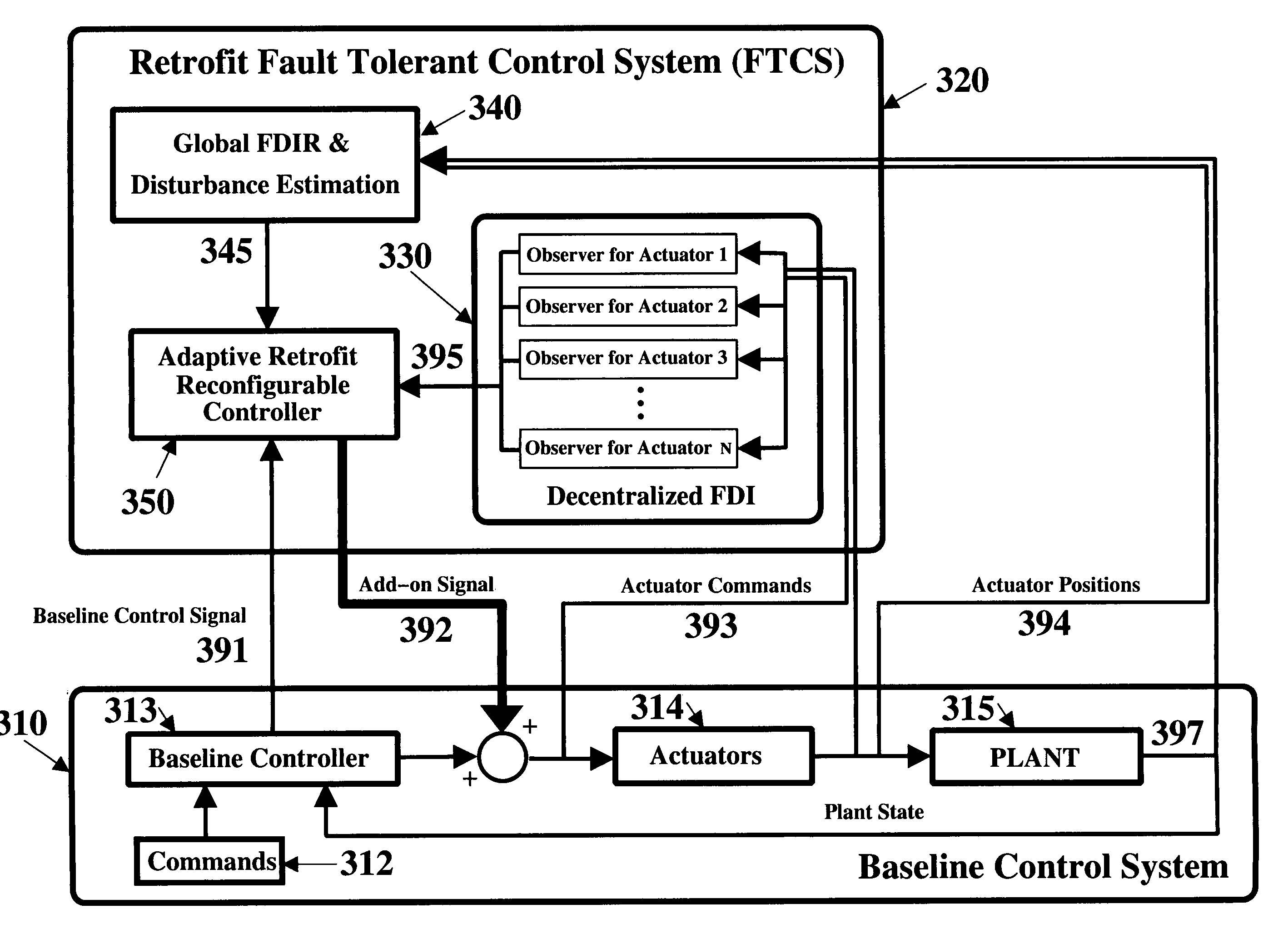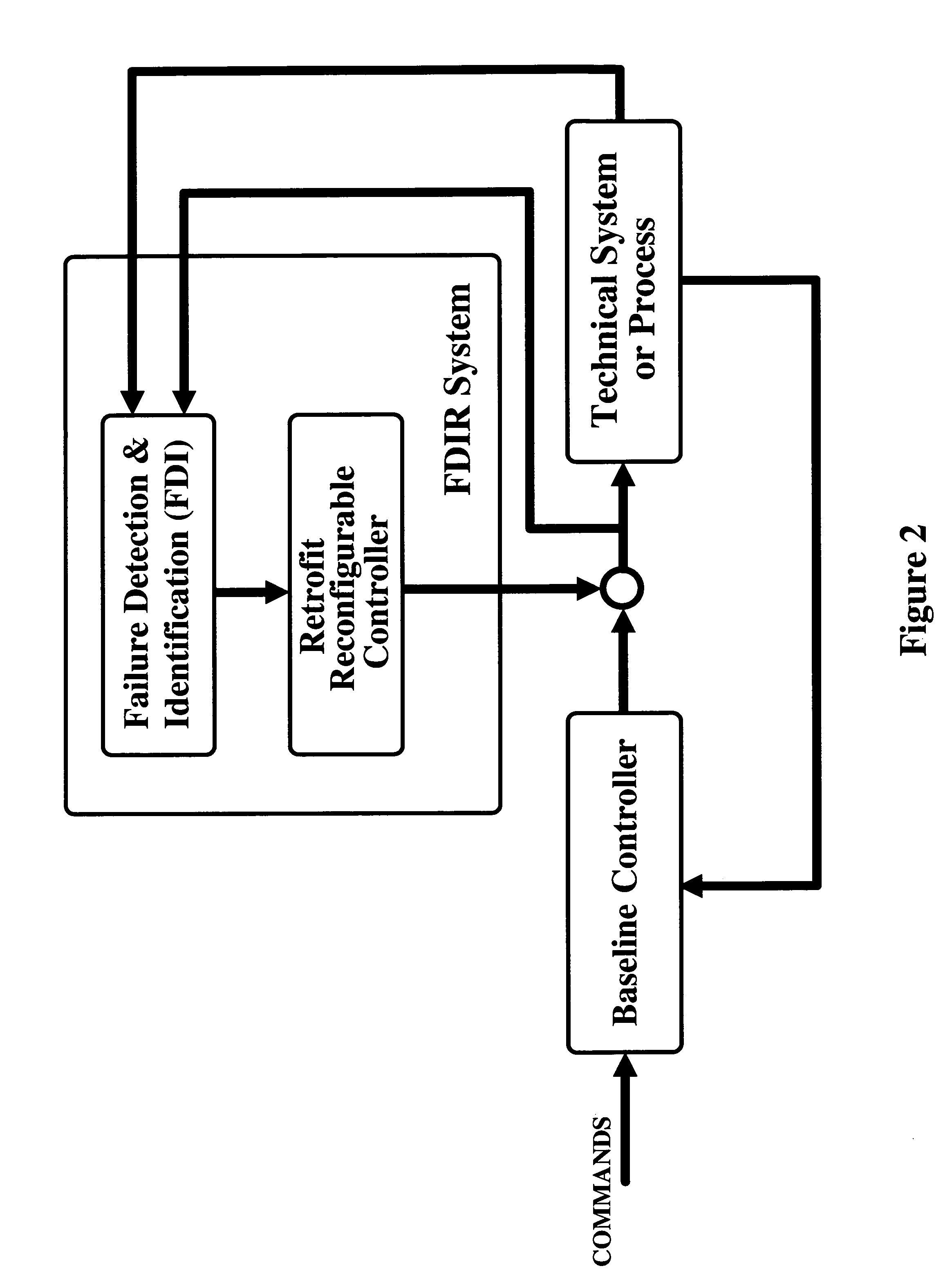Methods and apparatus for safe, fault-tolerant control of complex technical systems
a technology of complex technical systems and fault-tolerant control, applied in the direction of steering initiation, instruments, vessel construction, etc., can solve problems such as actuator failures, and achieve the effects of fast reconfiguration of control systems, fast detection and identification of failures, and simplified design
- Summary
- Abstract
- Description
- Claims
- Application Information
AI Technical Summary
Benefits of technology
Problems solved by technology
Method used
Image
Examples
Embodiment Construction
[0030]The purpose of the invention is to solve the difficult problem of fast, accurate and robust detection and identification of multiple simultaneous flight control actuator failures and surface damage, and effective reconfiguration of the remaining healthy effectors to achieve the flight performance close to that of the healthy aircraft. The invention is also referred to as the FTCS (Fault Tolerant Control System). The FTCS solves this problem by effectively combining several new and efficient algorithms.
[0031]FIG. 1 schematically illustrates a embodiment of a control system according to the invention. This control system includes two modules, namely, a failure detection and identification module and a reconfigurable controller module. Each of the modules can be, for example, adaptive or non-adaptive. In this embodiment, the control system does not include a separate baseline control module.
[0032]FIG. 2 schematically illustrates another embodiment of a control system according to...
PUM
 Login to View More
Login to View More Abstract
Description
Claims
Application Information
 Login to View More
Login to View More - R&D
- Intellectual Property
- Life Sciences
- Materials
- Tech Scout
- Unparalleled Data Quality
- Higher Quality Content
- 60% Fewer Hallucinations
Browse by: Latest US Patents, China's latest patents, Technical Efficacy Thesaurus, Application Domain, Technology Topic, Popular Technical Reports.
© 2025 PatSnap. All rights reserved.Legal|Privacy policy|Modern Slavery Act Transparency Statement|Sitemap|About US| Contact US: help@patsnap.com



